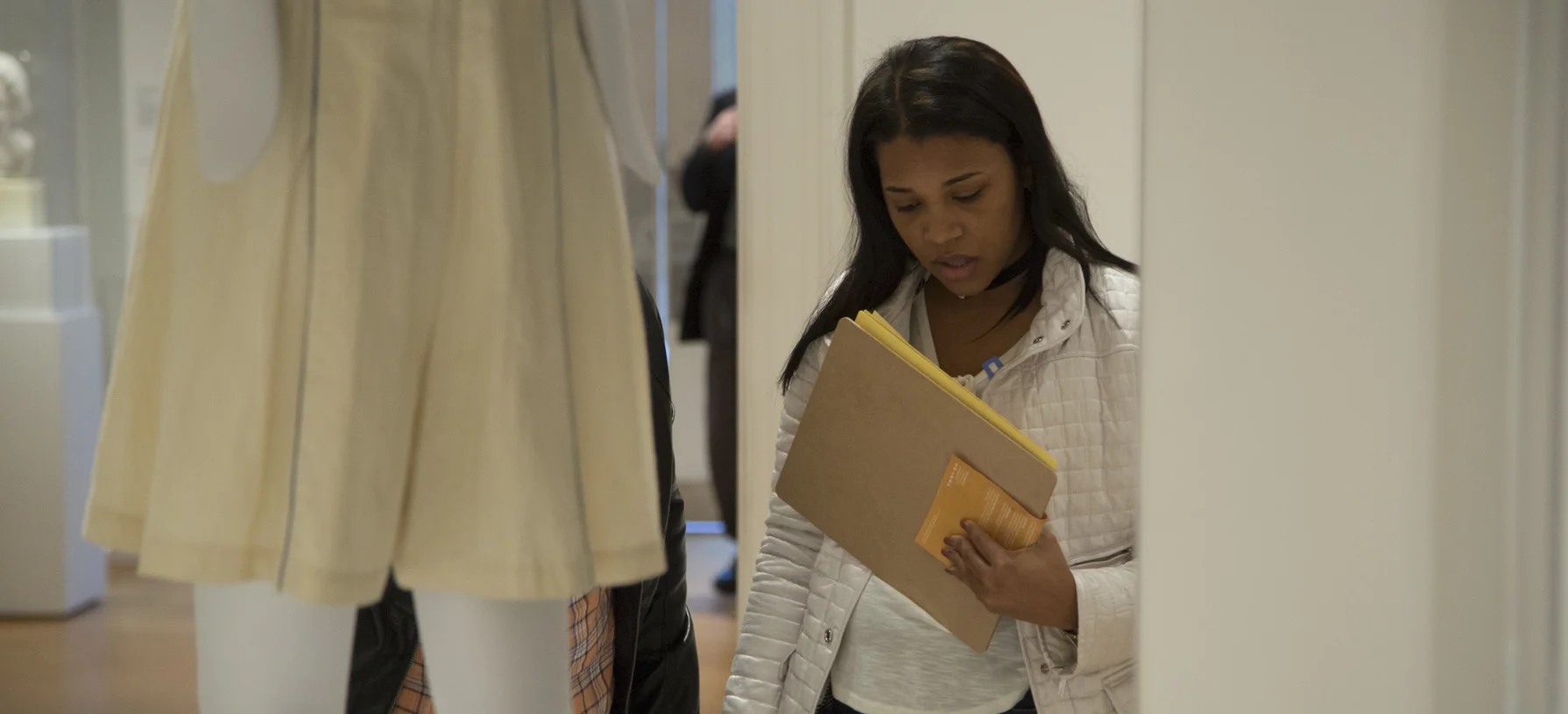How it works
The 2016 pilot of Look at Art. Get Paid. at the RISD Museum in Providence, Rhode Island, conveys how the program works.
We posted an advertisement in Rhode Island's public buses.
We received over 200 inquiries and narrowed it down to 41 participants, prioritizing people who had never been to a museum and people of color. We used the common and legible format of a research study to reach the public.
We conducted 30 minute phone interviews with participants and invited them to the museum.
Phone interviews focused on the participants' existing cultural engagements and their relationship to art and museums. We also used this time to clarify our position and intentions—we were not employees of the museum and wanted to hear honest opinions.
We hosted a brief orientation and defined the job of the 'guest critic.'
We provided snacks and refreshments upon arrival. We assigned participants the role of the guest critic, a title that typically refers to visiting experts paid to critique art in an academic setting. Our handbook offered ways to structure the visit and permission to interpret. Download the handbook here.
Guest critics had 2 hours to explore the museum's galleries.
We encouraged guest critics to pay attention to their senses: sight, sound, smell, and touch. They observed the art, architecture, social codes, visitors, staff, security, signage, and more.
Some guest critics took notes.
We provided note paper and optional written activities, inviting the guest critics to re-write a museum label and draw a blind contour of an artwork.
After two hours exploring the galleries, the critics participated in a group critique.
We facilitated a one-hour open conversation about the museum—its art collection, space, protocol, and relationship to the public.
Guest critics were paid $75 in cash at the end of their visit.
They were paid $15 an hour—above living wage in Providence, RI at that time—for 5 hours of work. This included a 30-minute pre-visit phone interview, a 1-hour orientation, 2-hours looking at art, 1-hour discussion and critique, and a final 30-minute post-visit phone interview.
We presented the feedback of the guest critics at an all-staff dialogue at the RISD Museum.
We showed a video featuring the guest critics, followed by a conversation amongst museum staff.
Staff have reported that LAAGP has renewed urgency and galvanized equity initiatives.
Deputy Director of the RISD Museum, Sarah Ganz Blythe, says, “Look at Art. Get Paid. proves that data sets aren’t enough to change perspectives. It is actually the actually the affective elements that can really reinforce efforts, create urgency, and change how we think about community.”
We’re presenting this work at conferences and writing about it as well.
We’ve presented at Open Engagement, Visitor Studies Association, The Inclusive Museum, and the National Art Education Association.
We worked with artists in Providence to realize art interventions at the RISD Museum.
The projects engaged the ideas of our critics and were advised by a paid LAAGP critic from our pilot. They debuted June 2019.
Image: Mock-up for intervention into the RISD Museum’s signage.
“Look at Art. Get Paid. opens space for real talk by flipping the script between the institution and the public. This artwork has the potential to transform how art institutions think of themselves in the world, outlining a simple, innovative, and actionable path toward equity. We need this now. ”












